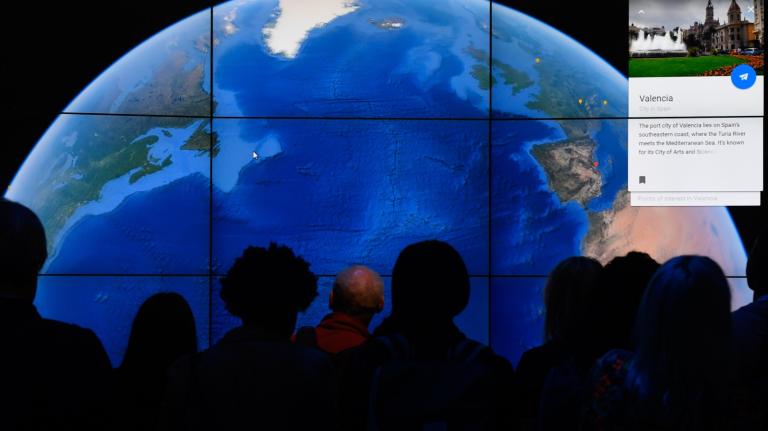In Meat Wagon, we round up the latest outrages from the meat and livestock industries.
—–
A handful of large companies [PDF] dominate the U.S. meat industry. The biggest of all (besides Cargill whose interests extend well beyond meat) is Tyson Foods, one of the two largest beef packers, the second-largest pork packer, and the second-largest chicken producer.
Tyson has exerted tremendous influence over the recent U.S. food culture and economy. It innovated the “vertical-integration” strategy that now dominates meat production, wherein mega-packers breed, slaughter, and process farm animals — mostly leaving the risky job of raising them to farmers working on contract. In Fast Food Nation, Eric Schlosser reports that in the ’80s, Tyson bred a monstrous, large-breasted chicken dubbed “Mr. McDonald” specifically for an experimental chicken dish for a certain fast-food chain. Ever heard of Chicken McNuggets?

After years of roaring success, the U.S. meat industry has fallen on hard times. The industry’s lifeblood — cheap corn and soy for feed — has dried up since the biofuel boom started in 2006. The flailing economy means people are eating out less and cutting back on meat, and investment bankers are much less enthusiastic about financing takeovers.
More long-term, there’s a growing public awareness of the the grim ecological, public-health, human rights, and animal-welfare implications of industrial-meat production, as evidenced recently by the decisive passage of California’s Prop. 2.
But Don Tyson, son of the company’s founder and its controlling shareholder, has a plan. He laid it out in a recent exclusive interview with the Associated Press. Tyson’s vision can be summed up like this: Generate the next profit windfall by industrializing and consolidating meat production in Brazil, India, China, and the entire global south — just as Tyson and its peers did in the U.S. starting in the ’70s.
AP reporter Christopher Leonard gives a concise history of Tyson Foods’ vast influence here in the U.S.:
Tyson Foods embodied a new mode of agriculture that emerged in Southern states after World War II. Chicken companies were the first to absorb all the local pieces of a small town economy and bring them under one corporate roof. Tyson owned the feed mill, the hatchery and the slaughterhouse. It paid farmers to grow its chicks, using its feed, at a price set by Tyson. This “vertically integrated” model dominates poultry production nationwide and is expanding into pork and cattle production.
Don Tyson ramped things up in the ’70s:
Tyson the company grew under Don Tyson’s leadership during the 1970s as he bought up competitors and branched out into the hog business. Tyson formed close relationships with fast food chains like McDonald’s and became the supplier of choice for processed products like chicken nuggets and chicken tenders, which yielded a higher profit margin than selling chicken through a grocery store.
But the good times are over. “We have done about as much in the United States as we can do,” Tyson tells AP. Now he’s trained his gaze south.
“Now the company plans to duplicate that success in developing nations where a growing middle-class population for the first time can afford to eat meat and visit drive-through windows,” Leonard writes. He didn’t add that these countries also offer lax environmental labor code and deep pools of low-wage labor.
The credit crunch has made it difficult to finance a big global expansion, Leonard reports. So Don Tyson — who owns a huge personal stake in the company and controls 70 percent of its voting shares — is reaching into his own deep pockets to help finance the move overseas, writes Leonard.
There have already been aggressive moves into India, China, and most notably, Brazil.
Tyson announced three joint ventures in China this year, including last month’s purchase of a 60 percent share of Shandong Xinchang Group’s poultry operations. It also purchased the majority interest in chicken processing plants in Zhucheng and Shandong, and majority interest in a poultry operation being developed in Haimen City near Shanghai.
In India, Tyson bought a 51 percent ownership of Godrej Foods, Ltd., based in Mumbai. The joint venture will be called Godrej Tyson Foods and is expected to have annual sales of about $50 million.
Analysts fret that the India incursion may fail. “In India, for example, nearly 65 percent of the population still makes a living off of agriculture and the government restricts the size of farms,” one source tells Leonard.
Brazil, on the other hand …
Brazil is an easier fit, Tyson said, because of the country’s tradition of large plantations and ranches. It isn’t hard to sign up large landowners to build industrial barns on their 1,000 acres of pastureland. Tyson plans to use Brazil as a base from which to export to markets around the world, he said.
Given the mammoth ecological footprint of industrial meat production — documented by the FAO’s 2007 report “Livestock’s Long Shadow” — Tyson is actively pursuing a nightmare vision for the globe. Let’s hope Tyson’s relations with the incoming Democratic administration are much chillier than his notoriously cozy ones with the Clintons.
Six years ago, a former organizer named Luiz Ignacio “Lula” da Silva won election as Brazil’s president amid a wave of popular hope. Lula so far has largely failed to challenge agribusiness interests. Let’s hope he stands up to block Tyson’s plan to make Brazil CAFO to the world.


